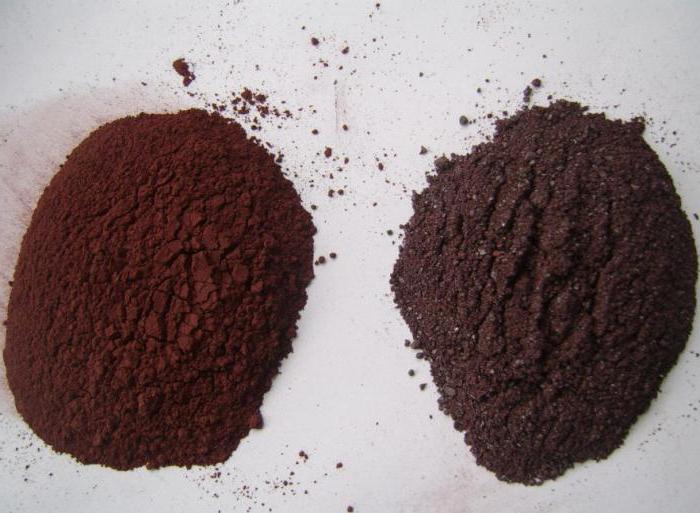Can you describe allotropic modifications?phosphorus? Our article is devoted to the properties of this particular substance. In nature, there are several allotropic modifications of phosphorus. Let's get acquainted with this topic in more detail.
Concept of allotropy
Chemical elements can form differentkinds of simple substances. This phenomenon is called allotropy. It can be due to two reasons. In the first case, this is a different number of atoms of an element in a substance. For example, oxygen and ozone. They consist of Oksigen. Only the first gas contains two atoms, and the second three.
Allotropy of phosphorus has a different nature.Combining, its atoms are capable of forming crystal lattices of various types. How is this possible? Three covalent bonds are formed in the molecule of this substance. But in pairs they are connected only by one. The remaining two valence units are used to attach the third and fourth atoms. Thus, either an atomic or molecular crystal lattice is formed.

Phosphorus in nature
Under normal conditions, this substance is not found inpure form. This is due to its high chemical activity. The main compounds of phosphorus are salts - phosphates and apatites. Phosphorus atoms are part of the cell membranes, bone tissue and nucleic acids, which are carriers of hereditary information.

Properties and the name of allotropic modifications of phosphorus
Depending on the type of crystal latticeThis substance can be represented by several modifications. It is white, yellow, red and black. Allotropic modifications of phosphorus have received their names due to color. Under high pressure conditions, white and red phosphorus turns to black. The physical properties of each type have sharp differences. Let's consider each of them separately.

White phosphorus
Preparation of this allotropic modification of phosphoruscan be called "fantastic coincidence." At the end of the seventeenth century, the German alchemist Henning Brand worked on the production of the philosopher's stone. According to the legends of the time, he had amazing properties: to turn ferrous metals into gold, to give eternal life and freedom. Evaporating the urine, the scientist received a dry residue. Since this substance glowed in the dark, Brand decided that this was the philosopher's stone. In fact? it was white phosphorus.
Consider the properties and structure of this allotropicphosphorus modifications. It is a colorless or yellowish crystalline substance. Its hardness is small - white phosphorus can be cut with a knife under water. It is insoluble in water, melts at a temperature of 44 degrees Celsius.
This allotropic modification of phosphorus is different.from all other significant chemical activity. Already at 40 degrees it reacts with oxygen and ignites. This form is the most poisonous.
Yellow phosphorus
This substance belongs to the group of highly toxic.Yellow phosphorus is called unpurified white. It ignites easily in air. A bright green flame is formed and a large amount of white acrid smoke is emitted. Since yellow phosphorus is capable of self-ignition, it is stored and transported only under a layer of water.

Red phosphorus
Allotropic modifications of phosphorus canturn into each other. This requires certain conditions. So, with prolonged heating under high pressure and in the presence of carbon dioxide, white phosphorus turns into red. For the first time this reaction was carried out at the end of the 19th century by the Austrian chemist Ritter Schretter.
Красный фосфор химически менее активен.This substance is soluble only in molten lead and bismuth. The ignition process does not occur when the temperature rises. Red phosphorus turns into steam, which then - in white. But in order for a fire to occur, it is necessary to hit or grind this substance.
This modification is less toxic than white. Therefore, it is widely used in the production of matches as the basis of the substance of a fused box surface.

Black phosphorus
Только в XX веке стало известно, что фосфор forms allotropic modifications, which are its most stable and least active form. This is black phosphorus. This time the discovery belonged to the American physicist Percy Bridgeman, who was the Nobel laureate. But he received a high award not for obtaining black phosphorus, but for creating a device capable of creating high atmospheric pressure. This was one of the conditions under which red phosphorus turns to black.
Visually, this modification resembles graphite.These are crystals of black color with metallic luster, oily to the touch, insoluble in water and organic substances. This substance is melted only at a temperature of 1000 degrees.
Areas of use
Comparing the properties and structure of allotropicmodifications of phosphorus, it becomes clear a large number of areas of use of this substance. Consider some of them. Yellow phosphorus, which forms a thick smoke screen, makes this substance a raw material for the defense and military industries. In particular, it is used in the manufacture of tracer bullets. The phosphor track, which is formed when it is fired, stretches for a whole kilometer. The ability of phosphorus to glow is used in the manufacture of paints.
Many compounds are widely used.phosphorus. In conjunction with the gray red modification is used to obtain matches. Chloride is used as a plasticizer and pest control additive.
Химический элемент фосфор необходим всем живым organisms for normal development. Its daily rate is about 1.5 grams. It is possible to replenish these stocks thanks to the consumption of cereal, legumes and dairy products.
So phosphorus is a chemical element thatmay be in the form of several simple substances. In other words - to form allotropic modifications. Depending on the type of crystal lattice, it can be white, yellow, red or black phosphorus. Each of these modifications has different physical and chemical properties, physiological effects on the body and area of application.







